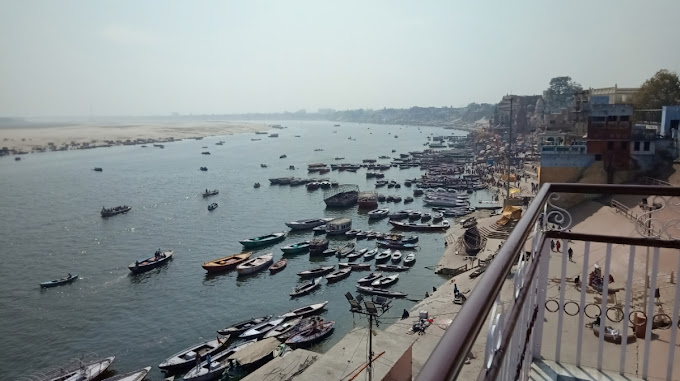Kumbh Mela 2025- Prayagraj

Kumbh Mela 2025- Prayagraj
Kumbh Mela: A Spiritual and Cultural Spectacle
The Kumbh Mela is one of the most significant and largest human gatherings in the world. It is a sacred Hindu festival that takes place every 12 years, attracting millions of devotees, sadhus, and tourists from around the globe. The Kumbh Mela is a celebration of spiritual enlightenment, cultural heritage, and communal harmony.
History and Mythology
The origins of the Kumbh Mela date back to ancient times, with references to the festival found in the Hindu scriptures, the Puranas. According to mythology, the Kumbh Mela commemorates the victory of the gods over the demons in a battle for the nectar of immortality, known as amrita.
The story goes that the gods and demons had churned the ocean to produce the amrita, but the demons had attempted to steal it. The gods, led by Lord Vishnu, had managed to retrieve the amrita and had distributed it among the gods. However, four drops of the nectar had spilled on the earth, at four different locations: Prayagraj (Allahabad), Haridwar, Ujjain, and Nashik.
These four locations are considered sacred and are the sites where the Kumbh Mela is held every 12 years. The festival is a celebration of the divine nectar and the victory of good over evil.
The Festival
The Kumbh Mela is a 48-day festival that takes place on the banks of the sacred rivers at the four designated locations. The festival is divided into several phases, each with its own significance and rituals.
- Shahi Snan: The first phase of the festival is the Shahi Snan, or the royal bath, which takes place on the first day of the festival. This is the most important and sacred bath of the festival, and it is considered a privilege to take a dip in the sacred waters on this day.
- Paush Purnima: The second phase of the festival is the Paush Purnima, which takes place on the full moon day of the Paush month. This is a significant day for the sadhus and saints, who gather to take a dip in the sacred waters.
- Mauni Amavasya: The third phase of the festival is the Mauni Amavasya, which takes place on the new moon day of the Magh month. This is a day of silence and meditation, and it is considered an auspicious day for spiritual growth and self-reflection.
- Basant Panchami: The fourth phase of the festival is the Basant Panchami, which takes place on the fifth day of the Magh month. This is a day of celebration and joy, and it marks the beginning of the spring season.
The Significance of the Kumbh Mela
The Kumbh Mela is a celebration of spiritual enlightenment, cultural heritage, and communal harmony. The festival is significant for several reasons:
- Spiritual Significance: The Kumbh Mela is a celebration of the divine nectar and the victory of good over evil. It is a time for spiritual growth, self-reflection, and introspection.
- Cultural Significance: The Kumbh Mela is a celebration of Indian culture and heritage. It is a time for music, dance, art, and literature, and it showcases the rich diversity of Indian culture.
- Communal Harmony: The Kumbh Mela is a celebration of communal harmony and unity. It is a time for people from different backgrounds and faiths to come together and celebrate their shared humanity.
The Preparation and Organization
The preparation and organization of the Kumbh Mela are a massive undertaking that involves the coordination of multiple government agencies, NGOs, and private organizations. The preparation begins several months in advance and involves the following:
- Infrastructure Development: The government and private organizations work together to develop the infrastructure for the festival, including roads, bridges, and temporary shelters.
- Security Arrangements: The government and security agencies work together to ensure the safety and security of the pilgrims and visitors.
- Health and Sanitation: The government and health organizations work together to provide medical facilities and ensure the sanitation and hygiene of the festival area.
- Cultural and Spiritual Programs: The government and cultural organizations work together to organize cultural and spiritual programs, including music, dance, and art exhibitions.
The Experience of the Kumbh Mela
The experience of the Kumbh Mela is a unique and unforgettable one. The festival is a celebration of spiritual enlightenment, cultural heritage, and communal harmony, and it offers a glimpse into the rich diversity of Indian culture. Lots of people especially foreigners also come to enjoy this largest bathing festival.
The bathing dates of Kumbh Mela in Prayagraj 2025 are as follows :-
- Paush Purnima: January 13, 2025
- Makar Sankranti: January 14, 2025
- Mauni Amavasya: January 29, 2025
- Basant Panchami: February 3, 2025
- Maghi Purnima: February 12, 2025
- Maha Shivaratri: February 26, 2025




